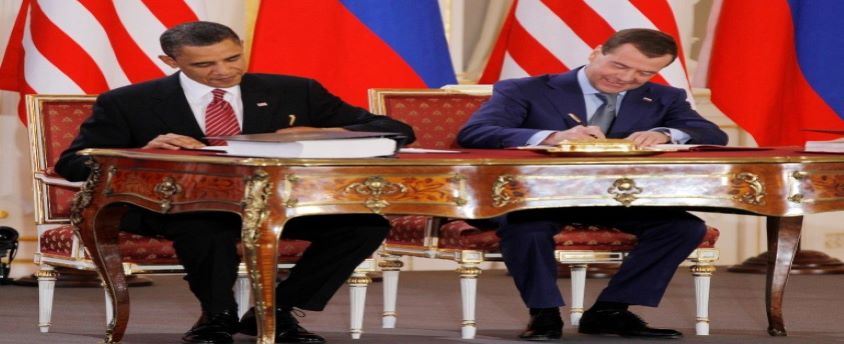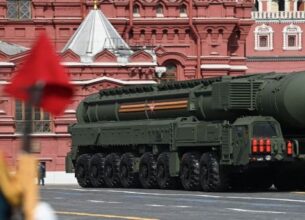The New START treaty on pause
01, Mar 2023

Prelims level : International Relations
Mains level : GS-II International Relations | Bilateral, Regional and Global Groupings and agreements involving India
Why in News?
- The Russian President announced the suspension of its participation in the New START treaty (February 2023).
- The START treaty was signed in 1982 by Ronald Reagan and Mikhail Gorbachev, the then leaders of the U.S. and the erstwhile Soviet Union respectively.
Highlights:
- The U.S. and Russia engaged in multiple bilateral talks to reduce and keep checks on each other’s nuclear arsenals. For instance,
- The Strategic Arms Limitation Talks (SALT) was the first formal dialogue in 1969.
- The Anti-Ballistic Missile defence systems Treaty was signed in 1972. It provided for the shooting down of incoming missiles. It was unilaterally pulled out of the pact by the U.S. in 2002.
- In 1991, the Strategic Arms Reduction Treaty (START I) was signed (expired in 2009).
- The Strategic Offensive Reductions Treaty (SORT or Moscow Treaty) was signed in 2002. However, it was replaced by the New START treaty in 2010.
- The New START treaty was the last remaining nuclear weapons control agreement between Moscow and Washington that together hold 90% of the world’s nuclear arsenal.
New START treaty:
- It was signed by former U.S. President Barack Obama and Russian President Dmitry Medvedev. It came into force in February 2011.
- In 2021, it was extended for five years.
- According to the Treaty, America and Russia cannot deploy more than 1,550 strategic nuclear warheads and more than 700 long-range missiles and bombers.
- It further limits the countries to 800 deployed and non-deployed launchers and delivery vehicles.
- Moreover, it allows both countries to carry out up to 18 short-notice (32 hours) on-site inspections of strategic nuclear weapons sites annually to check that the other country had not violated the limits set in the treaty.
- Russia and the U.S. should also exchange data on ballistic missiles, bombers, test sites, nuclear bases, etc twice a year.
- It also mandates the two countries to send notifications within five days of new changes or updates in their stockpile. For example, moving missiles to a new base or deploying a new warhead to the system.
- The agreement gave both countries seven years to reduce their stockpiles. Consequently, in 2018 both nations met the arms limits prescribed by the pact.
- It should be noted that the inspections were put on hold in March 2020 (due to COVID-19).
Russia’s stand:
- Russian President Vladimir Putin said that while the U.S. had pushed for the resumption of inspections of Russian nuclear facilities, NATO allies were helping Ukraine to launch drone attacks on Russian air bases hosting nuclear-capable strategic bombers.
- Russia has also pointed out that the nuclear weapons of Britain and France were part of NATO’s nuclear capability but weren’t included in the U.S.-Russian pact.
- The U.S. is also accused of rejecting Russian requests for visits to specific U.S. facilities.
Consequences of the move:
- The analysts suggest that the move would not immediately trigger an arms race between the two powers, as Russia has not withdrawn from the treaty and only “suspended” it.
- Moreover, the Russian administration has clearly stated that it does not plan to breach the limits on warheads prescribed in New START.
- Similarly, in another statement by the Russian Foreign Minister, Russia would continue to notify the U.S. of planned test launches of inter-continental ballistic missiles (ICBMs).
- It is also highlighted that the move is a political message indicating that Russia no longer thinks that nuclear arms control is a separate issue from bilateral relations (Russia-Ukraine conflict).
- Observers are of the view that Russia’s move will disturb the fragile calculus of nuclear arms controls between the two largest nuclear powers.
- It will also give an opportunity to other nuclear-armed countries, particularly China and others (Pakistan, Iran, Israel, and India) to increase their arsenals.
- It also has the potential to hamper arms control cooperation between the U.S. and China.







